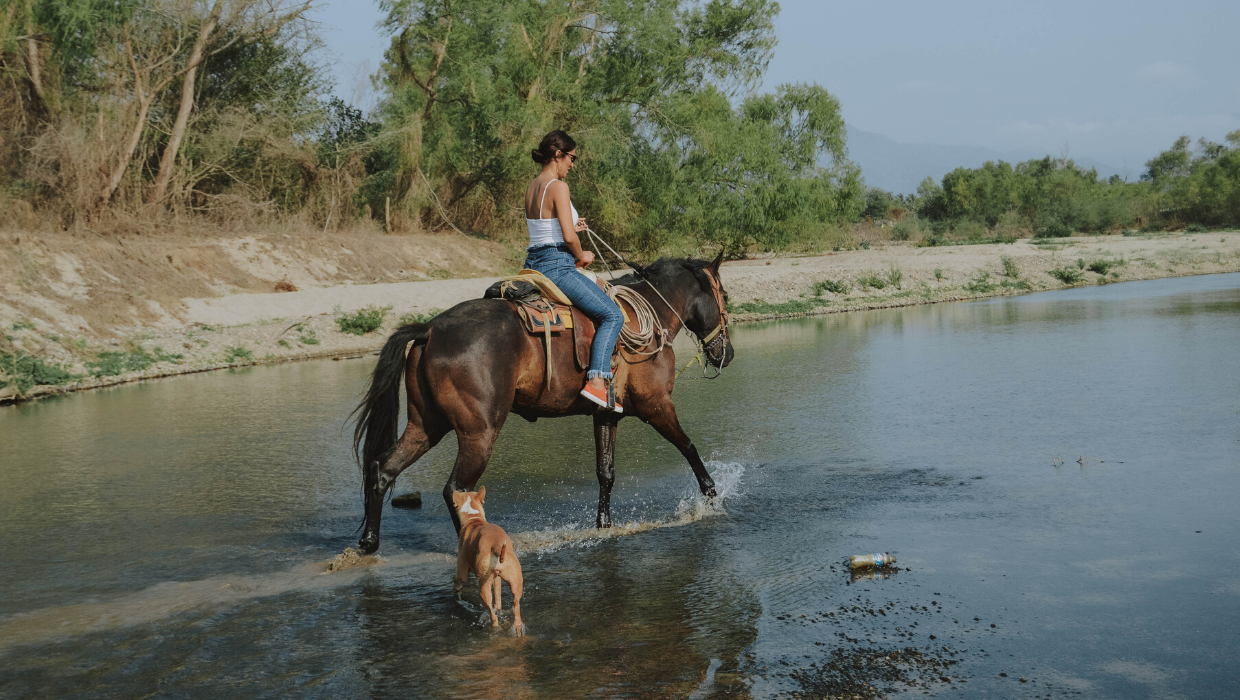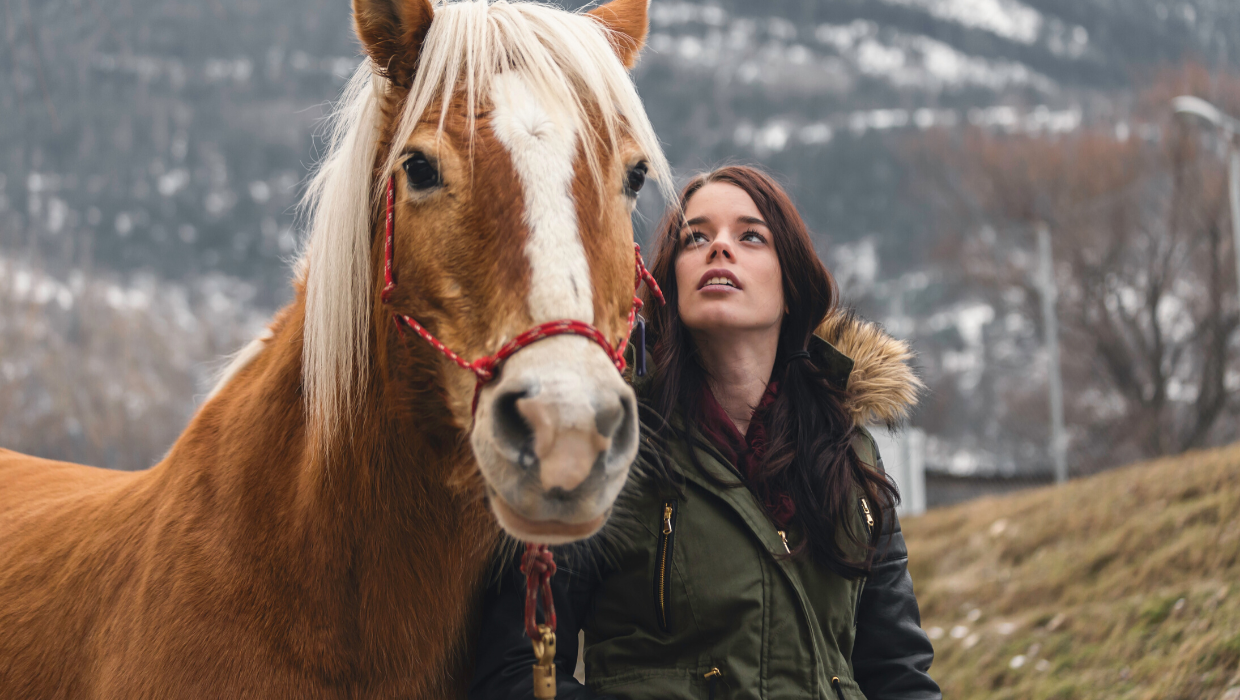Forming a bond with your horse

Horses, like dogs, have been man’s companion for the longest time. From braving the ice ages to engaging in competition, they’ve been there for us. Horses were first ridden and milked around 5,500 years ago in northern Kazakhstan. Eventually, horses were domesticated and kept.
Studies have shown that horses are able to detect and interpret human emotion. Which gives us a hint at what horses want from us.
Be firm, fair, and consistent with your horse
You need to show your horse that you are both their superior and their friend. Horses instinctively seek leadership; it's in their nature. Leadership includes determining the direction for the group and rendering security to all others in their herd. Leading horses usually are wise, calm, and stable. Many people believe that a fire-bred stallion leads the team, when in fact, they are only third or fourth in command. The duty, more often than not, falls on a mare — similar to how lions get all the credit, but it is the lioness who puts in all the work. Moving on, a leading horse is often an older mare as she serves to make sure that her team is kept safe and led to an adequate food source. The younger horses have high respect for her wisdom, experience, guidance, and providing safety. In this case, you are the “leader horse.” Your horse will rely on you for protection, nurturing and feeding. This dominant-submissive relationship works well in forming a bond with your horse.
Don’t just show up during work hours
Spend time with your horse out of the saddle, otherwise they’ll associate your presence with work hours. When take the time to walk with your horse and in general just hang out with them, they will appreciate it. A bond is formed away from work, pressure, and demands, as horses often thrive in quiet spaces where they don't feel the need to get spooked flee a situation. The relationship begins at that moment, and it strengthens when you ask them to move throughout moments of pressure — to come out on the other side safely and comfortably with you as your horse’s guide.
Experience things together
Aside from going through the daily grind, set aside time during the day to go on leisure rides. For the record, some horses love swimming. Just like with people, horses are fairly good at maneuvering through water. From there we can assume that they enjoy being in the water. However, there are certain horses who don't like to be in the water and not all horses are naturally good at swimming. Find something that both you and your horse like - eating apples on a sunny day, for example. Another you can do is explore new territory with your horse while staying off saddle. Walk next to your horse with their reigns in hand, keeping in mind that you should lead, and they follow.

Understand their body language
How your horse stands and the direction their body is pointed at says a lot about how they’re feeling. We’ve compiled a quick guide for you in case you need help interpreting your horse’s body language.
Ears
Forward position — ears that lean down mean that a horse is relaxed
Pinned down — coupled with rigid muscles, pinned down ears signify oncoming aggression
Turned to side — when your horses’ ears are turned to the side, they are at their most vulnerable sleeping
Pointed backwards — yes, horses are in on the tea too, they love eavesdropping
Head Carriage
Lowered — relaxed or feeling good
Elevated — focused on something in the distance; alert and ready to bold
Snaking — assertion of dominance; red alert
Forelegs
Standing splayed — spooked and ready to flee
Pawing — bored and impatient
Stomping — indicates irritation
Striking — this is pretty much self-explanatory, your horse is defensive
Hind Legs
Cocked — when your horses constantly shift their weight from one leg to another, in pain
Raised — scuffling legs can also be a sign of irritation
Muzzle
Drooping lip or slack mouth — relaxed or asleep
Chewing — indicated learning or problem solving
Clacking teeth — exclusive to younglings when they’re in need of protection by their mother
Flehmen — decoding scents around
Flared nostrils — drawing in more air after exercising
Tight, pinched, or pursed mouth or muzzle — an extremely subtle sign indicating that your horse is worried, stressed, or scared
Gaping mouth wide visible teeth — this can mean one of two things (1) a tight bridle pulling on their teeth or (2) an obstruction in their esophagus
Eyes
Tension — early sign of stress or discomfort
Rapid darting — scared and looking for a way to escape
White of eyes showing — extremely worked up or upset
Tail
Raised or flagged — sign of excitement
Clamped down — lack of confidence
Rapid swishing — your horse is about to fly off control, heed it immediately
Whole Body
Tension — rigid muscles indicate that your horse is either hurting, nervous, or stressed
Trembling — shaking is almost always a sign of fear
Touching you — your horse is ready to give you a nervous or playful nip because they’re curious about you
Swinging Hindquarters — more often than not, your horse is ready to kick so back up

Groom your horse
Often, one of the best methods to get to understand your horse is to be the one who grooms them. Placing your horse in a self-care situation supplies you the opportunity to be with your horse multiple times a day. Your horse learns that you are the one that feeds him and takes him outside — instead of the person who shows up once a day to ride.
Grooming is an excellent technique to get to know your horse better and build a relationship founded on trust with them. When you open up to your house, you need to be present — be IN the moment. Turn your mobile phone off and focus on your horse. It will speak volumes about your horse.
Your horse will tell you where they are ticklish, where they are in pain, where they like to be scratched, where they are comfortable being touched, where he is not comfortable being touched. Respect your horse by not touching them where they don't want to be touched. The only time you should make contact with your horse is when both of you have achieved a level of comfort with each other.
Respect their space
Horses are large animals that require personal space. To them, it is sacred. Refer to our portion on interpreting your horses body language. If your horse is agitated, walk around them and give them space. But if they’re in a relaxed and friendly mood, walk up to them and pet them. Experts suggest that horses consider their personal space to be 1.5 meters. Some horses have antagonistic responses to having their bubble invaded. Many horses are taught to tolerate ignorant space encroachment by people. However, some horses haven't acquired this skill and may become defensive when their bubble is encroached on. Fearful horses are normally more sensitive and typically have a larger comfort zone than other horses.
Bringing your horse treats is not the way to go
Most people believe that bringing their horses treats is a method of gaining trust and offering their friendship. However, it does quite the opposite. While your heart is in the right place and your intentions are set, by bringing your horse carrots and apples, you are placing yourself on the lower end of the hierarchy ladder. Your horses will see you as the subservient that brings them food. Horses are not the kind of animals that shares their food as a sign of friendship. In a herd setting, the more authoritative horse will snatch food from the horse subordinate to them in the hierarchy. By offering your horse treats, what you're saying is, "You're the boss." Aside from that, the excess amounts of sweets and food are unhealthy for your horses. While this may appear like a smart way to obtain your horses' attention, it may lead to nipping, biting, and potentially rude behavior from your horse.
Walk with your horse
Walking with your horse as opposed to riding them, adds a distinctive dimension to your relationship. You will discover how to trust one another — and it is an excellent way to exercise for you and your horse.
Walking is a way to establish ground manners beyond the formal teaching environment. It is an opportunity for you and your horse to have some particular one-to-one time.
It is important to note that you might meet things on your walks that worry your horse. Use these as training opportunities. When you come across things that spook your horse, they will either be things you can pick up or drop.
If it is a lightweight or portable item and alright to move, pick it up and take it with you. Your horse will note that the object has not eaten you, and you are not bothered by carrying it. Your horse will then re-evaluate and go from scared to curious. Once your horse is interested, it will need to see what it is – at first, provisionally.
Once you get to this stage, you can halt walking with the object you've picked up and drop the object in front of your horse — allow your horse to sniff the object and then push it aside. Taking the object away gives your horse freedom to think.
When your horse is comfortable with the object, allow them to sniff the object longer, and reward their bravery. You know a horse is pleased with the object when they put their nose on it. Stay on this step for as long as your horse is uncomfortable and then return the object to where you found it.
For objects that can't be moved, put yourself between it and your horse. It's the most assuring place to be because scared horses don't run towards something that scares them.
Keep your energy levels low; make sure to encourage your horse by speaking to them gently and slowly. Show your horse that it's safe by interacting with the object, for example, touch it. Your horse will eventually work out that it hasn't eaten you and be curious. Trainers replicate these objects in school before going out to help your horse overcome their fears.

There are many different ways to bond with horse, it can be traditional or fun! If you’re struggling to bond with your horse, then it’s about time to consider going to school with them. It’s a great opportunity to get to know them better. Until next time!
Also in News

15 Summer Essentials For Dogs: Keep Your Furry Friend Cool and Happy

10 Pawsitively Perfect Holiday Gifts for Dog Lovers

